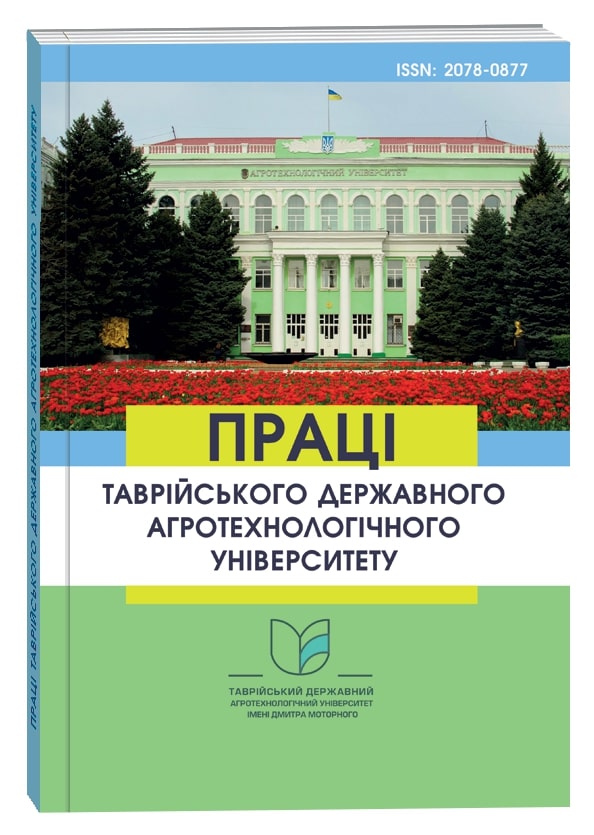ПОРІВНЯЛЬНИЙ АНАЛІЗ ЛІТІЙ-ЗАЛІЗО-ФОСФАТНИХ ТА НАТРІЙ-ІОННИХ НАКОПИЧУВАЧІВ ЕНЕРГІЇ
Анотація
Накопичення енергії являє собою процес зберігання, вивільнення та управління енергетичними ресурсами за допомогою спеціалізованих систем акумулювання. У сучасних умовах розвитку енергетики ця технологія набуває дедалі більшого значення, зокрема у зв’язку з активним упровадженням відновлюваних джерел енергії (ВДЕ). Оскільки виробництво енергії з таких джерел, як сонячна та вітрова, є нестабільним і не піддається прямому регулюванню, виникає необхідність у її зберіганні в періоди надлишкового виробництва або зниженого попиту. У цьому контексті перспективними рішеннями є літій-залізо-фосфатні (LiFePO) та натрій-іонні (Na-Ion) акумуляторні системи, які відкривають нові можливості для локального зберігання енергії. Завдяки високій енергоефективності ці технології мають потенціал для широкої інтеграції в енергетичну інфраструктуру – від побутового використання до промислових масштабів. У роботі проведено порівняльний аналіз електрохімічних систем накопичення енергії на основі LiFePO₄- та Na-Ion-акумуляторів. Особливу увагу приділено їхнім технічним характеристикам, енергоефективності, довговічності та матеріалам, що використовуються у виробництві. Розглянуто економічну доцільність упровадження зазначених технологій як у побутовому, так і у комерційному секторах.
Посилання
2. Jamil M., Wei Sh., Taylor M.Ph., Chen J.J.J., Kennedy J.V. Hybrid Anode Materials for Rechargeable Batteries – A Review of Sn/TiO2 Based Nanocomposites. Energy Rep. 2021. 7. 2836–2848. https://doi.org/10.1016/j.egyr.2021.05.004
3. Hannan M.A., Al-Shetwi A.Q., Begum R.A. Ker P.J., Rahman S.A., Mansor M., Mia M.S., Muttaqi K.M., Dong Z.Y. Impact assessment of battery energy storage systems towards achieving sustainable development goals. Energy Storage. 2021. 42. 103040. https://doi.org/10.1016/j.est.2021.103040
4. Patel T. A Comparative Study of Lithium-ion and Sodium-ion Batteries: Characteristics, Performance, and Challenges. Friedrich Alexander Universität Erlangen Nürnberg (FAU). 2023. 14 March. https://open.fau.de/handle/openfau/21891
5. Shi N., Chen Z., Niu M., He Z., Wang Y., Cui J. State of charge estimation for the lithium-ion battery based on adaptive extended Kalman filter using improved parameter identification. Energy Storage. 2021. 45. 103518. https://doi.org/10.1016/j.est.2021.103518
6. Belik M. Optimisation of energy accumulation for renewable energy sources. Energy Power Qual. J. 2021. 19. 205–210. https://doi.org/10.24084/repqj19.258
7. Martinko D., Medved D., Kolcun M., Mazur D. Planning of the Optimal Performance of Household Photovoltaics and Battery Storage within Consideration of Investment Return. Przeglad Elektrotechniczny. 2024. 100(1). 105–111. https://doi.org/10.15199/48.2024.01.22
8. Lezhniuk P., Buslavets O. Rubanenko O. Balancing electricity generation and consumption in a system with renewable energy sources. 2nd KhPI Week on Advanced Technology (KhPIWeek), Kharkiv, Ukraine. 2021. 63–68. https://doi.org/10.1109/KhPIWeek53812.2021.9570087
9. Makovenko E. Single-phase three-level qZ-source inverter connected to the grid with battery storage and active power decoupling function. 59th International Scientific Conference on Power and Electrical Engineering of Riga Technical University (RTUCON), Riga, Latvia, 12–13 November 2018, 1–6. https://doi.org/10.1109/RTUCON.2018.8659843
10. Halko S., Halko K., Suprun O., Qawaqzeh M., Miroshnyk O. Mathematical modelling of cogeneration photoelectric module parameters for hybrid solar charging power stations of electric vehicles. 2022 IEEE 3rd KhPI Week on Advanced Technology (KhPIWeek), Kharkiv, Ukraine. 2022. 1–6. https://doi.org/10.1109/KhPIWeek57572.2022.9916397
11. Al-Issa H.A., Qawaqzeh M., Kurashkin S., Halko S., Kvitka S., Vovk O., Miroshnyk O. Monitoring of power transformers using thermal model and permission time of overload. International Journal of Electrical and Computer Engineering (IJECE). 2022. 12(3). 2323–2334. https://doi.org/10.11591/ijece.v12i3.pp2323-2334
12. Qawaqzeh M., Dudnikov S., Miroshnyk O., Moroz O., Savchenko O., Trunova I., Pazyi V., Danylchenko D., Halko S. Buinyi, R. Development of algorithm for the operation of a combined power supply system with renewable sources. 2022 IEEE 3rd KhPI Week on Advanced Technology (KhPIWeek), Kharkiv, Ukraine. 2022. 1–4. https://doi.org/10.1109/KhPIWeek57572.2022.9916372
13. Sodium Ion Batteries: Performance Advantages and Broad Application Prospects in Extreme Temperatures. https://www.LiFePO4-battery.com/News/sodium-ion-batteries-advantages.html
14. First Phosphate. How the LFP Battery Works https://firstphosphate.com/phosphate-industry/about-the-lfpbattery/#:~:text=How%20the%20LFP%20Battery%20Works,than%20one%20negatively%20charged%20element
15. Subramanyan K., Akshay M., Lee Y.S., Aravindan V. Fabrication of Na-Ion full-cells using carbon-coated Na3V2(PO4)2O2F cathode with conversion type CuO nanoparticles from spent Li-Ion batteries. Small Methods. 2022. 6. 2200257. https://doi.org/10.1002/smtd.202200257
16. Identifying the pinch points in the LFP supply chain. https://firstphosphate.com/lfp-battery-strategy
17. FutureBatteryLab. The big beginner’s guide to Sodium-Ion batteries https://futurebatterylab.com/ the-big-beginners-guide-to-sodium-ion-batteries.
18. Rudola A., Rennie A.J.R., Heap R., Meysami S.S., Lowbridge A., Mazzali F., Sayers R., Wright C.J., Barker J. Commercialisation of high energy density sodium-ion batteries: Faradion’s journey and outlook. Mater. Chem. A. 2021. 9. 8279–8302. https://doi.org/10.1039/D1TA00376C
19. Bazaluk, O., Struchaiev, N., Halko, S., Miroshnyk, O., Bondarenko, L., Karaiev, O., Nitsenko, V. Ways to improve the efficiency of devices for freezing of small products. Materials, 2022, 15(7), 2412. https://doi.org/10.3390/ma15072412
20. Bondarenko L., Halko S., Matsulevych O., Tetervak I., Vershkov O., Miroshnyk O., Nitsenko V., Havrysh V. The Experimental Research оn Unit Operation for Fruit Crops’ Bones Calibration. Applied Sciences (Switzerland). 2023. 13(1). 21. https://doi.org/10.3390/app13010021
21. Kumar R., Goel V. A study on thermal management system of lithium-ion batteries for electrical vehicles: A critical review. Energy Storage 2023. 71. 108025. https://doi.org/10.1016/j.est.2023.108025
22. Schwarz S. Lithium Iron Phosphate – enabling the future of individual electric mobility. 2022. https://www.e-motec.net/lithium-iron-electric-mobility
23. Sodium-Ion Battery Market https://www.marketsandmarkets.com/MarketReports/sodium-ion-battery-market-207269067.html
24. Battery Data online. https://calce.umd.edu/battery-data#Storage
25. Sayahpour B., Hirsh H., Parab S., Nguyen L.H.B., Zhang M. Meng Y.S. Perspective: Design of cathode materials for sustainable sodium-ion batteries. MRS Energy Sustain. 2022. 9. 183–197. https://doi.org/10.1557/s43581-022-00029-9
26. Na-Ion battery online. https://www.hinabattery.com/en/index.php?catid=12.
27. Tabor S., Lezhenkin A., Halko S., Miroshnik A., Kovalyshyn S., Vershkov A., Hryhorenko O. Mathematical simulation of separating work tool technological process. E3S Web of Conferences, 2019, 132, 01025. https://doi.org/10.1051/e3sconf/201913201025
28. Lezhenkin O.M., Halko S.V., Miroshnyk O.O., Vershkov O.O., Lezhenkin I.O., Suprun O.M., Shchur T.G., Kruszelnick W., Kasner R. Investigation of the separation of combed heap of winter wheat. Journal of Physics: International Conference on Applied Sciences. 2021. 1781(1). 012016. https://doi:10.1088/1742-6596/1781/1/012016
29. Vovk O. Kvitka S., Halko S., Strebkov O. Energy-saving control of asynchronous electric motors of driving working machines. Modern Development Paths of Agricultural Production: Trends and Innovations. Cham: Springer International Publishing. 2019. 415–423. https://doi.org/10.1007/978-3-030-14918-5_43
30. Bashir T. A review of the energy storage aspects of chemical elements for lithium-ion based batteries. Energy Mater. 2021. 1. 100019.
31. Mahto T., Mukherjee V. Energy storage systems for mitigating the variability of isolated hybrid power system. Renewable and Sustainable Energy Reviews. 2015. 51. 1564–1577. https://doi.org/10.1016/j.rser.2015.07.012
32. Dwornicka R., Pietraszek J. The outline of the expert system for the design of experiment. Production Engineering. 2018. 20. 43–48. https://doi.org/10.30657/pea.2018.20.09
33. Adaikkappan M., Sathiyamoorthy N. Modeling. State of charge estimation, and charging of lithium-ion battery in electric vehicle: A review. Energy Res. 2021. 46(5). 2141–2165. https://doi.org/10.1002/er.7339
34. Rudola A.: The Future of Clean Transportation: Sodium-ion Batteries. http://www.bridgeindia.org.uk.
35. Samsung INR18650-25R datasheet. https://www.powerstream.com/p/INR18650-25R-datasheet.pdf
36. Миколюк О., Желавська І., Ляховець В. Формування ключових векторів забезпечення енергетичної безпеки крізь призму інноваційного розвитку альтернативних джерел енергії. Вісник Хмельницького національного університету. Економічні науки. 2018. № 3(1). С. 199–204. http://elar.khnu.km.ua/jspui/handle/123456789/6698
37. Dali M., Belhadj J., Roboam X. Hybrid solar–wind system with battery storage operating in grid-connected and standalone mode: control and energy management – experimental investigation. Energy. 2010. 35. 2587–2595. https://doi.org/10.1016/j.energy.2010.03.005
38. Mahto T., Mukherjee V. Energy storage systems for mitigating the variability of isolated hybrid power system. Renewable and Sustainable Energy Reviews. 2015. 51. 1564–1577. https://doi.org/10.1016/j.rser.2015.07.012
39. Luo Y., Shi L., Tu G. Optimal sizing and control strategy of isolated grid with wind power and energy storage system. Energy Conversion and Management. 2014. 80. 407–415. https://doi.org/10.1016/j.enconman.2014.01.061



